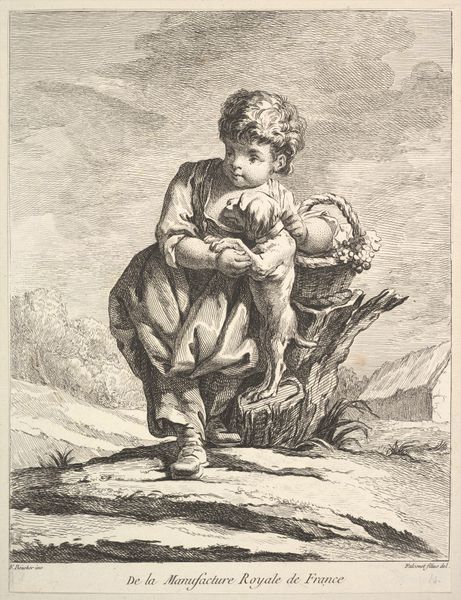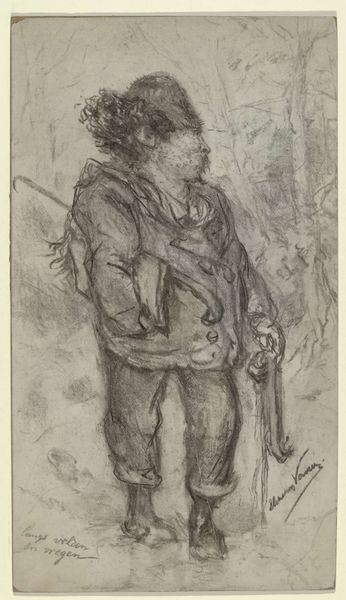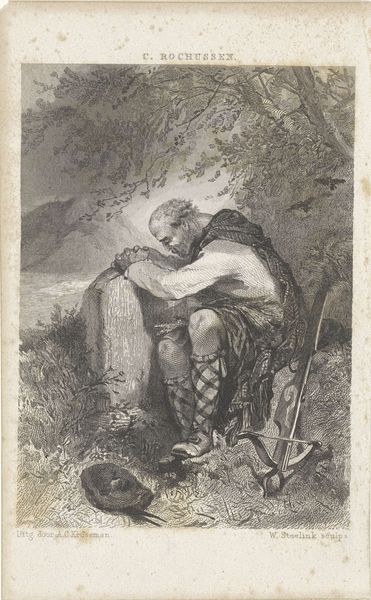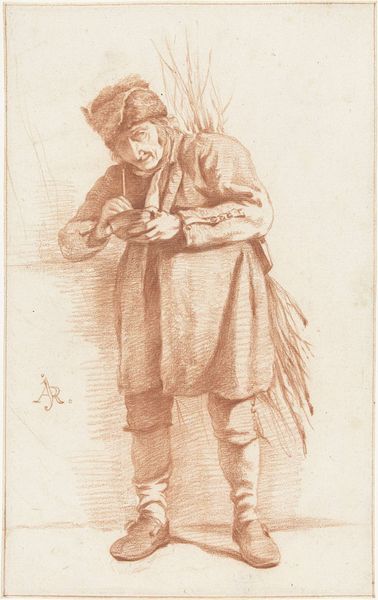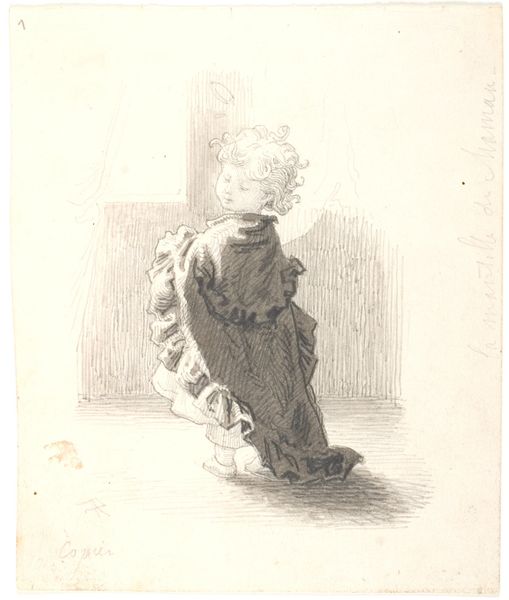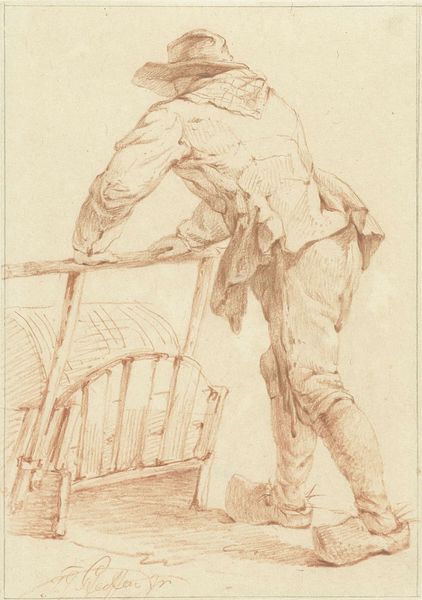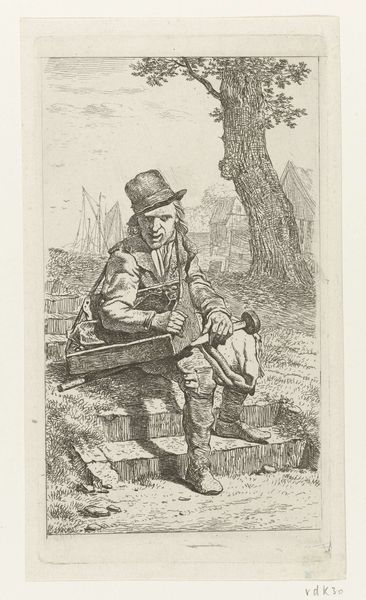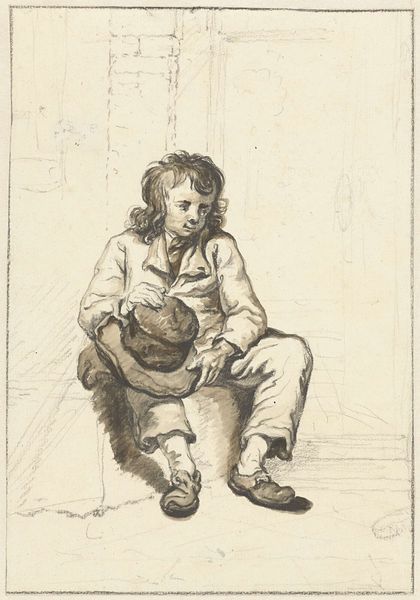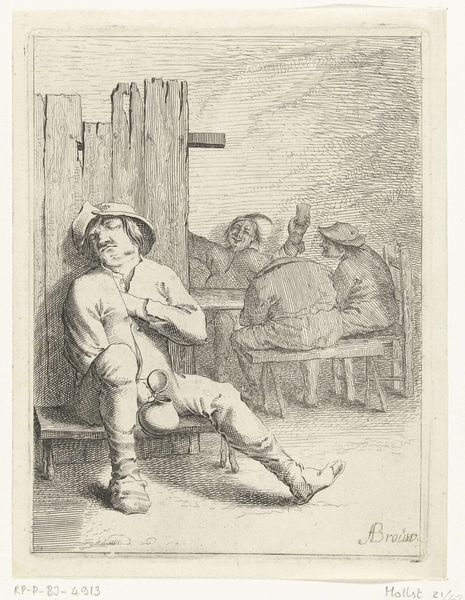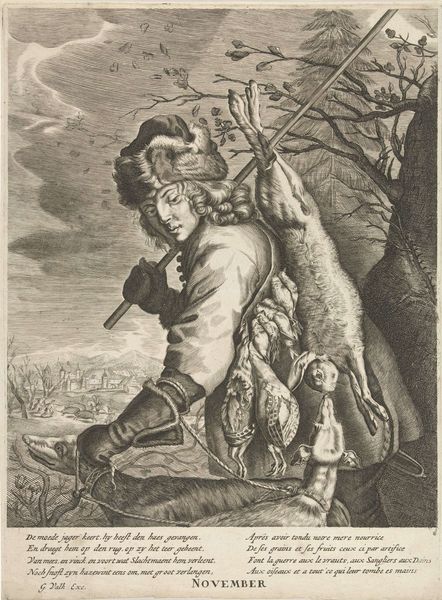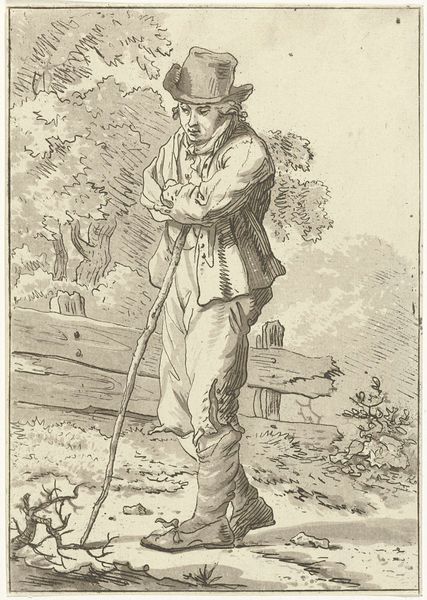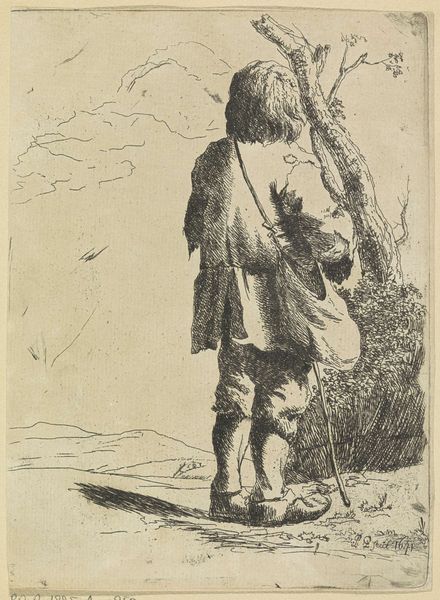
drawing, pencil
portrait
pencil drawn
drawing
landscape
charcoal drawing
pencil drawing
pencil
genre-painting
realism
Dimensions: height 558 mm, width 416 mm
Copyright: Rijks Museum: Open Domain
Curator: Welcome. Here we have Jacob van Strij's pencil drawing, "Standing Man with Bundle of Branches on his Back," created sometime between 1766 and 1815. The first thing I notice is the almost stark quality of the rendering; its stark greyscale tonality feels very direct. What’s your take? Editor: The figure emanates an atmosphere of labor and resilience, wouldn’t you agree? It suggests reflections on the socio-economic conditions of rural communities during this period, with the individual bearing a visible burden—the very literal weight of collected resources—that embodies their struggle for survival and self-sufficiency. Curator: True, and what really interests me is the composition itself. See how the subject is framed against this rough, angular fence? It creates a planar geometry that really sets off his organic form and softens his otherwise stout presentation. It seems clear that the artist very deliberately sets up this opposition. Editor: Absolutely. That positioning emphasizes the sitter’s marginalization from perhaps broader social systems. Leaning against this wooden structure indicates not only physical support but alludes to a system, or lack thereof, constructed to maybe provide social support but it seems to fall short. Notice how the background fades into soft forms. Curator: Yes, exactly, note the almost atmospheric, indistinct rendering of that distant landscape, versus the very deliberately incisive rendering of his jacket and bundle. Van Strij has truly captured this figure's palpable density. It becomes about line, contrast, the considered relationship of tones—these achieve something compellingly vital in its own right. Editor: The textures are remarkable. But even in their detail, what of the man himself—his gaze directed away from the viewer and towards the landscape evokes considerations of perspective, and the lack thereof in his immediate reality? Doesn't it inspire questions about his agency, perhaps reflecting larger questions regarding individuals existing at society's margins? Curator: I can concede the psychological element, the way the artist uses tonal relationships to really draw the eye to certain facets while deemphasizing others. He masterfully engages contrasts—not just visually, but in ways that hint at something more. The light isn’t merely light, but a form of highlighting, of drawing one in... Editor: And making us confront uncomfortable historical dynamics… Yes, it's impossible to overlook the drawing's impact on us today, forcing critical contemplation regarding labour, class, and representation, while connecting to a vital and vulnerable legacy that still matters. Curator: Agreed; these visual stratagems have truly given us so much to discuss!
Comments
No comments
Be the first to comment and join the conversation on the ultimate creative platform.
